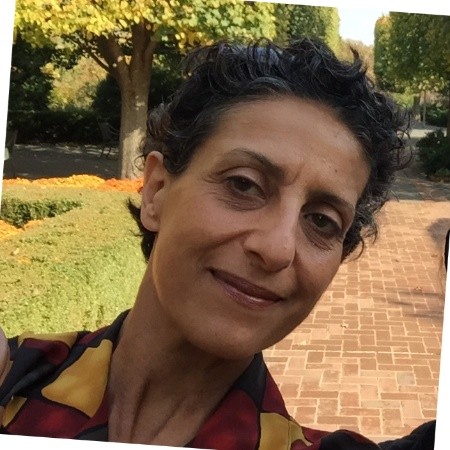
No Place Like Home: Understanding The “Medical Home” Method of Medical Care
By Sara Parvinian, M.D.
House Calls in the 21st Century
My first encounter with #medicalhome was at an ICAAP (Illinois chapter of American Academy of Pediatrics) CME conference years ago! And I liked it very much!
To me as a general pediatrician there is nothing more important than having my patients (and their care givers) to feel at “home” at the office!
I don’t know if anyone remembers Dr. Marcus Welby – the TV character who was this caring physician very much involved in his patients’ care, to the point of seeming almost like family. Growing up in Iran in the ‘60s our “doctor” was basically the same type of “involved physician”. A family friend that you wouldn’t mind going to his office when you were sick and there were times that you were visited at “home” by him since you were too sick to be taken out of the house to go to his “office”.
So Dr. Wellby was a very familiar personality to me! And I loved to have a similar relationship with my patients.
That’s why I got involved with ICAAP’s initiative on Illinois Medical Home Model and asked Dr. Charles Onufer M.D. who was at that time the director of UIC-DSCC (University of Illinois in Chicago- Division of Specialized Care for Children) and a pioneer in Medical Home concept of practice to introduce it to my colleagues at the office so we (The Children’s Health Center) could become a #medicalhome care providers for our patients.
What is a Medical Home and how can it differ from a “regular” medical care provider?
What is “Medical Home”?
We define “Medical Home” as a way of providing access to quality health care in a cost effective manner in a private health care settings that is:
- Accessible
- Family-centered
- Continuous
- Comprehensive
- Coordinated
- Compassionate
- Culturally competent
Doctor and Staff Requirements
A medical Home physician and staff have to :
- Know the child’s health history
- Listen to the parents’ and child’s concerns and needs
- Work in partnership with families to ensure that the medical and non-medical needs of the child and family are met
- Create a trusting , collaborative relationship with the family
- Treat the child with compassion and understanding
- Develop a care plan with the family for their child when needed
- To make the parents (care givers) comfortable sharing concerns and questions with the child’s primary care physician and other health care providers and to routinely communicate their child’s needs and family priorities to the primary care physician, who promotes communication between the family and other health care providers (specialists-therapists-etc.) when necessary.
So isn’t this what we all expect from our doctor’s office?
Yes and unfortunately even with all the advances in electronic medical records this expectation is not fulfilled in a lot of cases! Especially for children (and I assume adults) with special needs.

The Benefits of the “Medical Home” Methods
Just imagine your desperation as a parent of a child with chronic and complex medical issues or behavioral difficulties. How can you – every time you call to make an appointment – describe his problems, explain the need for your child to be taken to the examination room immediately upon arrival (to avoid a meltdown by exposure to sensory stimulators of a busy waiting room), or to have them accommodate her wheelchair and accompanied equipment that makes it hard to get through the regular hallway?
By having the Medical Home model of practice your child is identified, marked with her special accommodation protocol, and brief background information is provided to the receptionist making the appointment. The phone call will be short and sufficient to make the appointment the way it should be.
When a child with special needs who has a chronic and complex medical disorder is taken to an emergency room for say an accident or an acute illness while traveling, wouldn’t it be great to have a written or a digitally accessible “Care Plan” which gives the ER physician and staff the patient’s medical history including medications, allergies, behavioral specifications and information on how to contact the primary care provider if needed and so on and so forth ? Well, a Medical Home practice would provide the family with a “care plan” which is set up during the “Care Plan Visit” with the child and the care giver.
The patient’s information is also available via electronic medical records to all the physicians at the practice just in case the primary care provider is not in reach. This way the family members should feel more comfortable knowing their child’s medical information is updated and available to other medical facilities.
Following up on lab results or consults made with other care providers and specialists is not something that a patient in special needs category or their family care givers should worry about . This is the responsibility of the Medical Home Care Coordinator. As is scheduling multiple appointments with specialists and possible lab or imaging work ups with having family’s time and availability in mind to coordinate them based on their preference.
Maximizing Medical Care and Reducing Costs
There are times that rather than an office visit the physician can provide care and consult over the phone. And this may be a rather long phone conversation that, through a Medical Home Practice, the physician can be reimbursed for. And there might come a time that an in-house visit is necessary. A Medical Home practitioner should have resources to take care of that need.
As a Medical Home practitioner you put aside a special office visit to review and update the patient’s information, and to go over any unfamiliar items in his/her care and any questions the patient or family/care giver might have. And this is not a routine wellness check-up . This is The Care Plan visit for patients with special needs.
By simplifying the patient/provider connection out of the regular office hours we also reduce the risk of unnecessary ER visits when the Medical Home care providers can consult the patient or the caregivers over the phone or online. This will reduce the cost of care to both the patient and the covering health insurance company.
Making the Transition
Transition is a big part of pediatric care. Either for a “regular” patient or and more importantly for the patient with “special needs”!
To make plans and have the patient and family prepare for transition from pediatric care into adult care or transition from a “child” into an “adolescent” care takes time and lots of resources and information. A Medical Home physician will discuss Transition planning way ahead of deadline so the process can go smoothly and to the point.
ICAAP is very much involved in guiding pediatricians, family physicians, nurse practitioners and even internal medicine physician via CME courses and the yearly State Transition Conference into applying the model in their practices.
It is not a simple and easy process by any means. But an established “Medical Home” practice will become a very efficient and manageable organization with knowledgeable staff who can welcome their patients with special needs into a friendly “home”!

Sara Parvinian, M.D. is a retired pediatrician, author of the children’s book Where Did Grandpa Go?, and an advocate for children with special needs.




